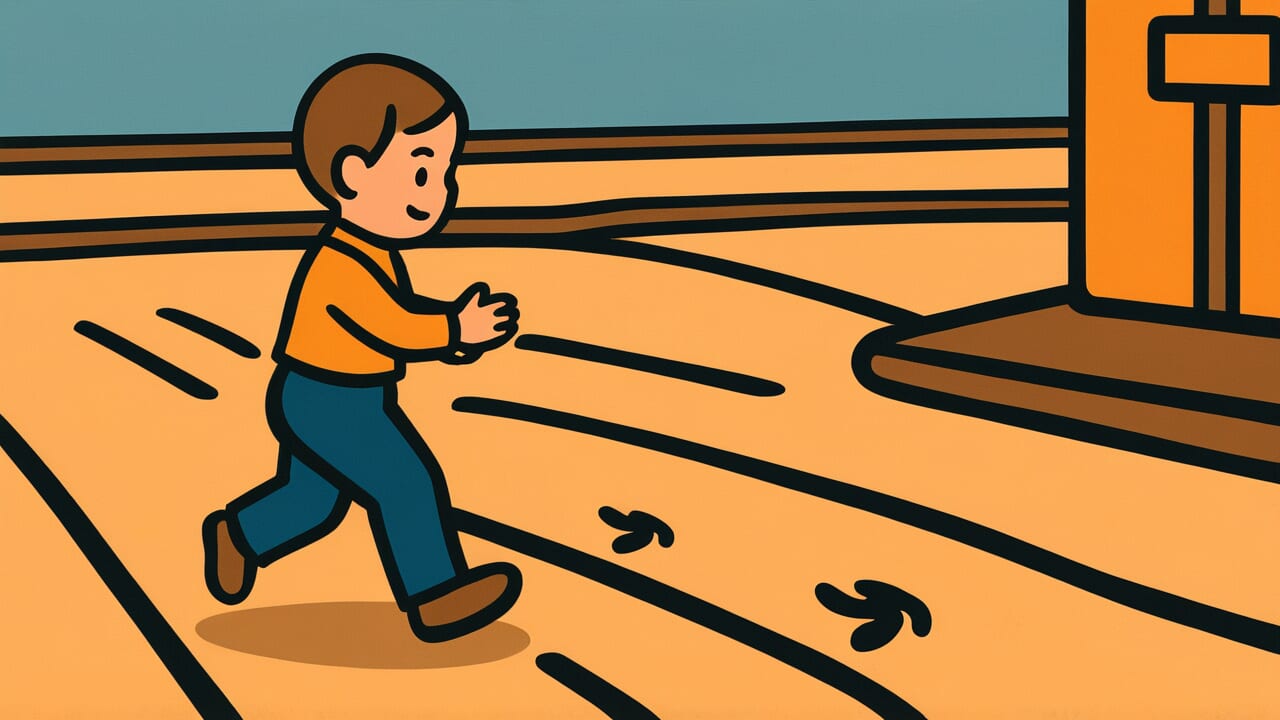How to Read “Being pulled by a child chasing after you”
Ato ou ko ni hikareru
Meaning of “Being pulled by a child chasing after you”
“Being pulled by a child chasing after you” describes a situation where a parent decides to leave their child for some reason. But when the child runs after them, the parent’s love and emotions hold them back. They cannot follow through with their decision.
This proverb applies when a parent knows rationally they should leave, but their feelings won’t allow it. The sight of a child lovingly chasing after their parent deeply moves the parent’s heart.
Even if the parent understands that separation is best for economic reasons or life circumstances, their resolve crumbles. The child’s pure expression of love is simply too powerful.
Today, this expression still captures the deep parent-child bond. It also shows the weakness of the human heart caught between reason and emotion.
People use it when describing the conflict parents feel in situations like divorce, job changes, or relocation. These are moments when they must choose to be apart from their children.
Origin and Etymology
The exact first appearance of this proverb in literature is unclear. However, based on its structure, scholars believe it likely emerged from common people’s life experiences during the Edo period or later.
The phrase “ato wo ou” literally means to chase after someone from behind. “Hikareru” expresses the feeling of being held back or pulled back by something beyond your own will.
When these two elements combine, they perfectly capture the inner conflict a parent feels when trying to leave their child.
Throughout Japanese history, situations where parents had to separate from their children were not uncommon. Children were sent away for apprenticeships. Parents left for seasonal work. Some gave up children for remarriage.
In such moments, a parent would steel their resolve and try to leave. But then a young child would cry and chase after them. Seeing this, the parent’s heart would waver and their feet would stop.
This heartbreaking scene is condensed into these few short words.
This proverb deals with the universal theme of parental love. That’s why it has been passed down through generations, continuing to resonate with people’s hearts across time.
Usage Examples
- I had decided on divorce, but my daughter cried and chased after me. I felt like “being pulled by a child chasing after you” and couldn’t go through with it.
- I turned down the job transfer because the feeling of “being pulled by a child chasing after you” was too strong.
Universal Wisdom
The proverb “Being pulled by a child chasing after you” reflects the eternal conflict between human reason and emotion. Sometimes we face situations where we must make choices we know are logically correct.
However, humans are not purely logical beings. Especially in relationships with loved ones, emotions can overwhelm reason.
This proverb has been passed down through generations because it captures the essence of the most fundamental human relationship: parent and child. A child’s innocent expression of love has the power to instantly collapse the logic and resolve that adults have built up.
This is not weakness. It may actually be proof of our humanity.
What’s interesting is that this proverb uses the passive expression “hikareru” (being pulled). The parent doesn’t turn back on their own. They are “pulled” by the sight of their child.
In other words, a force beyond their control is at work. This shows that love is not under the control of reason.
Our ancestors knew that humans cannot live by rational judgment alone. Rather, being shaken by emotions and having our resolve waver is what makes us human.
This proverb looks at this essential aspect of human nature with a warm gaze.
When AI Hears This
When one child chases someone, other children are drawn in one after another. This phenomenon is exactly what complexity science calls “emergence.”
Emergence occurs when individual elements follow simple rules, yet the whole creates unexpectedly complex patterns.
What’s notable is that the first child has absolutely no intention of gathering everyone. They’re simply chasing one target. But their movement transmits as an information signal to others: “something interesting is happening.”
Other children then make simple, independent judgments: “That child is running → something’s there → I should go too.” This chain of local reactions creates a large-scale group movement as an overall pattern.
Attractor theory also explains this. An attractor is a state toward which a system is naturally drawn. The chasing child’s path functions as a “gravitational point” in space, pulling in surrounding energy (other children’s attention and actions).
The phenomenon of likes concentrating on specific social media posts has the same structure. When the first few reactions exceed a critical point, the whole moves like an avalanche.
Self-organization of the group happens here, beyond individual intention.
Lessons for Today
This proverb teaches modern people that we cannot ignore emotions when making important life decisions. The business world values logical thinking. But in choices involving human relationships, especially family, emotions often become the most important factor.
What matters is not being ashamed of being swayed by emotions. Instead, accept it as part of your choice. If you pass up a career opportunity to choose time with your child, that’s a respectable decision based on your values.
Don’t regret it. Find meaning in that choice for yourself.
At the same time, this proverb encourages understanding of others. When someone doesn’t make what seems like a rational choice, there may be deep emotional reasons behind it.
Rather than easily criticizing “why didn’t you do that,” we should have the kindness to imagine their inner conflict. Being torn between reason and emotion is natural for humans.



Comments